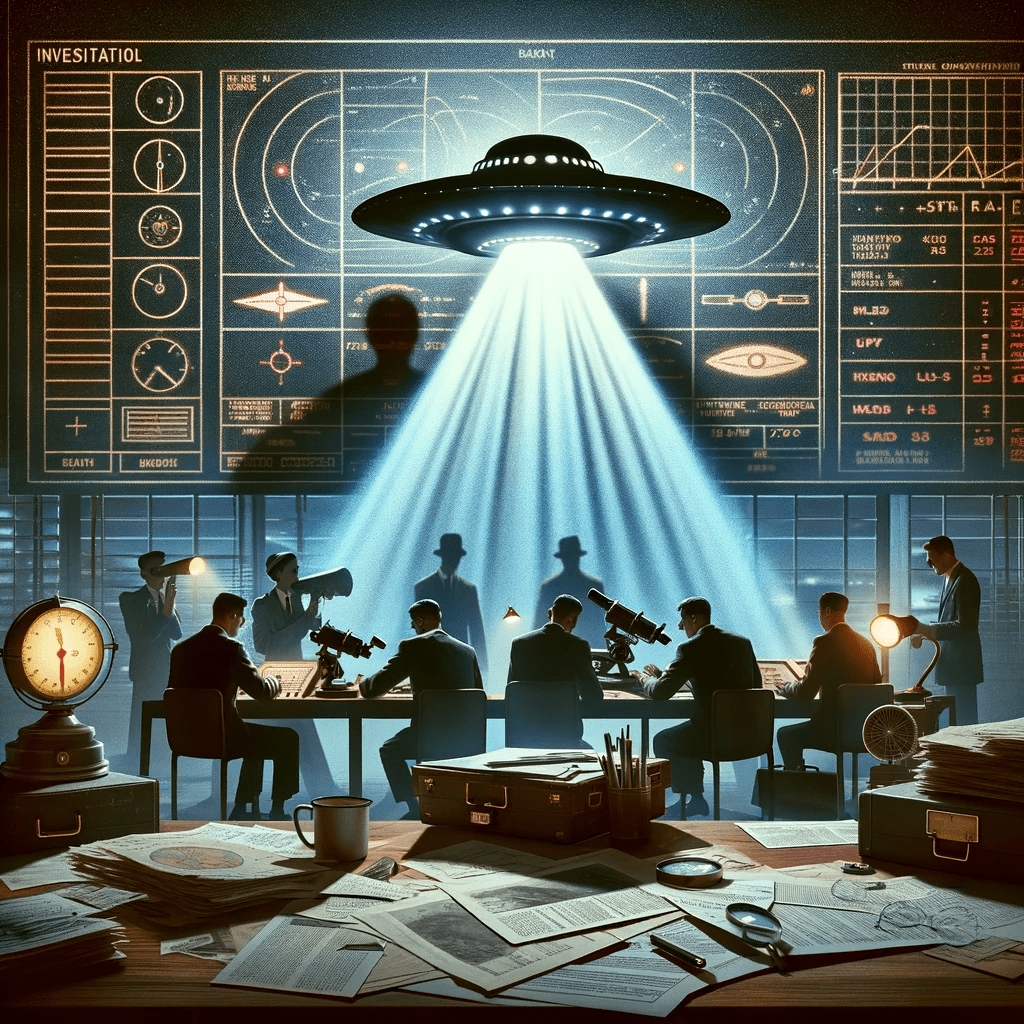Project Grudge

Project Grudge was an official U.S. Air Force investigation into the UFO phenomenon that took place from February 1949 to December 1951, succeeding Project Sign. The primary goal of Project Grudge was to determine if UFO sightings posed any threat to national security or if they had any scientific value. Headquartered at Wright-Patterson Air Force Base in Dayton, Ohio, the project involved a team of scientists, engineers, and intelligence officers who examined various sightings and encounters with unidentified flying objects.
Project Grudge employed scientific methodologies to analyze UFO sightings and experiences, attempting to discern any patterns or explanations that could be derived from the collected data. The project’s team scrutinized photographic evidence, radar data, and eyewitness accounts from military personnel and civilians. They worked to either identify natural or man-made causes for these sightings or determine if any of the encounters warranted further investigation.
Facts about Project Grudge:
- According to the official Project Grudge report, released by the U.S. Air Force in 1951, the project investigated 244 UFO sightings, out of which 23% remained unexplained (Source: Project Grudge Report, U.S. Air Force, 1951).
- Project Grudge established the “Grudge/Blue Book Report No. 13,” a controversial document allegedly containing the most sensitive information about UFO encounters. The existence of this report has been debated, with some claiming it was a hoax (Source: “The Grudge/Blue Book Report No. 13” by Bill English, 1984).
- The project’s findings were ultimately incorporated into Project Blue Book, the most extended and well-known UFO investigation conducted by the U.S. Air Force, which ran from 1952 to 1969 (Source: “Project Blue Book” by Capt. Edward J. Ruppelt, 1956).
Experts in the field of UFO research have varying opinions about Project Grudge. Some argue that the project was a sincere attempt to understand the UFO phenomenon, while others believe it was primarily concerned with debunking sightings and alleviating public concern. For instance, Dr. J. Allen Hynek, an astronomer and scientific consultant for Project Grudge, criticized the project’s dismissive approach towards UFO sightings and later became a proponent of serious UFO research (Source: “The UFO Experience: A Scientific Inquiry” by Dr. J. Allen Hynek, 1972).
In “Project Blue Book” (1956), Capt. Edward J. Ruppelt, the first director of Project Blue Book, provided an insider’s perspective on Project Grudge, claiming that the project was initially designed to dismiss UFO sightings rather than investigate them thoroughly. Another book, “The Report on Unidentified Flying Objects” (1956) by Ruppelt, further explores the limitations and findings of Project Grudge in the context of the broader UFO phenomenon.
The New York Times, primarily focused on the Air Force’s official stance that UFO sightings were attributable to conventional explanations like weather balloons, atmospheric phenomena, and aircraft (Source: The New York Times, 1951).
A few key individuals have been identified as having been involved with Project Grudge or its successor, Project Blue Book.
- Dr. J. Allen Hynek: An astronomer and professor at Ohio State University, Dr. Hynek served as a scientific consultant for Project Grudge and later for Project Blue Book. Initially a skeptic, Hynek eventually became a proponent of serious UFO research and developed the “Close Encounter” classification system.
- Capt. Edward J. Ruppelt: Although Ruppelt became the first director of Project Blue Book, he was also involved in the later stages of Project Grudge. Ruppelt was instrumental in transforming the project’s approach to UFO investigation, making it more systematic and scientific. He authored the book “The Report on Unidentified Flying Objects” (1956), which provides an insider’s perspective on Project Grudge and Blue Book.
- Maj. Gen. John A. Samford: As the Director of Intelligence for the U.S. Air Force during Project Grudge’s timeframe, Samford was responsible for overseeing the project. He held a press conference in 1952 addressing the UFO issue and the Air Force’s efforts to investigate the phenomenon.
It is important to note that Project Grudge involved teams of scientists, engineers, and intelligence officers who analyzed UFO sightings and encounters. However, the identities of many team members have not been disclosed publicly.
Project Grudge was a U.S. Air Force investigation that sought to understand and explain the UFO phenomenon. While its official findings attributed the majority of sightings to conventional explanations, a percentage of cases remained unexplained.

